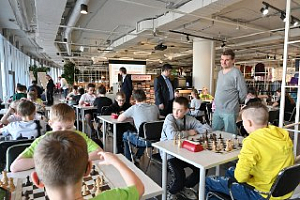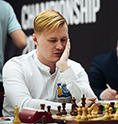9 July 2015
Assault of Königsberg
Dmitry Kryakvin analyzes the starting rounds of the Higher League.
In the westernmost part of Russia the best chess players of our country (with the exception of heavyweights, however) are conducting heavy battles in order to qualify into the Superfinal and get a ticket to faraway Chita. The Higher League is an arena where experience and youth do their best to overcome each other. The future generation is eager to launch forward, trying to break its way through those who have long been in service and are not willing to lay their arms down just yet. The Higher League is not an easy contest to participate in. Perhaps I can even name a dozen of players off the top of my head, which have stopped their tournament performance and decided to end their careers upon having failed at the Higher League. But there were also those who have gained valuable experience, glory, the place in this world as well as the significant amount of money out of the national qualifier. These names represent almost the entire rank of our national team members, with the exception of senior ones like Kramnik, Svidler, Morozevich, and Grischuk.
Who will become the revelation and the triumphant winner of the Higher League this time? The starting rounds have displayed interesting results both in men’s and women's sections, whereas the recognized favorites were far from having an easy ride in all of their encounters.
Round three saw the clash for the sole leadership on the first table between Ivan Popov and Alexander Rakhmanov. Sasha is a stern soldier that has been quenched in his native Cherepovets and in various numerous Swiss tournaments, whereas Vanya is a representative of the stellar generations of "1990s", the disciple of Mark Dvoretsky, who failed to become the world champion among juniors back in his days only due to a pure misfortune. I have known both grandmasters for quite some time now, and was even fortunate enough to have collaborated constructively with both of them in different times in the past.
Popov – Rakhmanov
1.e4 e6 2.d4 d5 3.Nc3 dxe4 4.Nxe4 Bd7 5.Nf3 Bc6
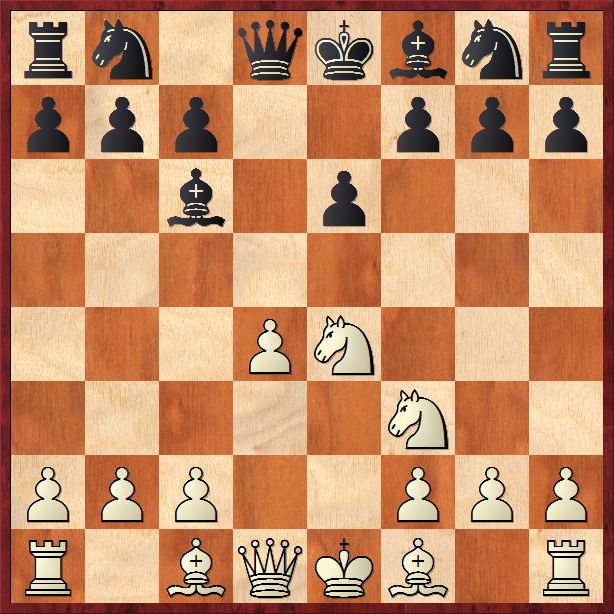
This plan was employed for the first time by great Capablanca himself. Indeed, the exchange idea suited the Black repertoire’s style of the Cuban quite perfectly: to knock a couple of minor pieces off the board to get rid of the mating ideas, and then outplay the inexperienced opponent positionally utilizing his inaccuracies. However, despite such an authoritative godfather the opening theory has always disliked this line. Its brief heyday occurred in the early 90's thanks to the abilities of Chernin, Korchnoi and Epishin, although even the chess heavyweights have resorted to this plan on a couple of occasions.
Later, the French with a bishop on c6 and the exchange line of the French have for long time remained in the shadows of the ultra-reliable Caro-Kann, the Marshall counterattack, and then in the shadows of the Berlin. Nowadays the two proponents who keep defending the credibility of the Capablanca system, are the northern classic Alexander and southern classic Baadur Jobava.
6.Bd3 Nd7 7.0–0 Ngf6 8.Ng3
At some point, all the might of the assault was connected with the white knight’s lunge 8.Neg5. It was quite well justified as 8...Bxf3?! is bad: 9.Qxf3 c6 10.Re1 Be7 11.Qh3 Nf8 (losing is 11...Nd5? 12.Rxe6, as in Bryzgalin-Vastrukhin, 2008, as well as 11...c5?! 12.Nxf7! Kxf7 13.Qxe6+ Kf8 14.Bc4 Qe8 15.Bf4 Nb6 16.Bd6 Nc8 17.dxc5 did not save Kiselyov in his encounter against Pilavov (2010, played in the village Luganskaya) as four pawns are superior to a bishop) 12.c3 Qc7 13.g3, as in Hellers-Andersson, 1993, and even a such a heavyweight as Ulf failed to raise to the occasion of defending Black’s formations.
9...h6? 9.Nxe6! fxe6 10.Bg6+ Ke7 should be immediately dismissed altogether as after 11.Re1 (as in Kryakvin-Kachko, 2007) or 11.c4 (as in Golubev-Sher, 1993) it is inevitably going to turn out badly for the black king. The same fate awaits the defenders of the defensive formations in the case of 8...Be7? 9.Nxf7! Kxf7 10.Ng5+ Kg8 11.Nxe6 Qc8 12.Re1 Bd6 13.Bf5!
However, there is only one satisfactory rejoinder for Black – 8...Bd6! Now 9.Re1 h6 (9...0–0?! 10.Ne5 is not to be allowed) 10.Nh3 Bxf3 11.Qxf3 c6 12.Nf4 0–0 (the pseudo-active 12...Qa5 leads nowhere after 13.c3 0–0–0 14.b4!, as in Bologan-Ivanov, 2006 or 13...0–0 14.Bc2 Rfe8 15.Be3 e5 16.Nh5 e4 17.Nxf6+ Nxf6 18.Qh3 Re7 19.Bb3 with an edge, as in Iordachescu-MacDonald, 2013) 13.Nh5 Nxh5 14.Qxh5 Nf6 15.Qh3 Re8 16.Bd2 e5 17.Qf5 Qc8!
This is an important move that allows neutralizing the bishop pair upon exchange of queens due to the centralized position of the black pieces.
18.dxe5 Qxf5 19.Bxf5 Bxe5 20.c3 g6 (as in Kryakvin-Chernyshov, 2010), and soon the head of the grandmaster center of the Russian Chess Federation arrayed all his pawns on the light squares, obtaining a reasonable position.
Retreating the knight to g3 is a more fundamental option, leaving more pieces on the board as was seen in the games of Anand, So, Leko, Karjakin, Nepomniachtchi and, as a slogan from the popular TV serial “Univer” on the Russian TNT channel, by no less a person than Mikhail Mozharov himself!
8...g6
This is a modern line from Baadur Jobava. Why develop the bishop to g7 later, if it can be done without further delay?
Rakhmanov has had the experience of facing the old line with 8...Be7. Whereas against Pavel Ponkratov (Voronezh 2014) it did not work out very well, in his game against Molner the same year Sasha displayed the whole range of ideas peculiar to the line:
8...Be7 9.c4 Bxf3 10.Qxf3 c6 11.b3 Qa5 12.Rd1 0–0 13.a3 Rfd8 14.Bb2 Nf8 15.h4 Rd7 16.Bc3 Qc7 17.Nf1 Ne8! 18.g3 Bf6 19.Bc2 Rad8 20.Qe3 Nd6, when Black managed to have his pieces regrouped within a tiny piece of the board and soon went on about besieging the White’s center.
9.b3
White failed to profit from an aggressive-looking 9.c4 Bg7 10.d5!? exd5 11.Re1+ Kf8 12.Nd4 Kg8 13.Qc2 Nf8 14.Nxc6 bxc6 15.Qa4 Qd6 16.cxd5 cxd5 17.Bf4 Qb6 as in a recent duel between Karjakin and Jobava, whereas after 9.Re1 Bg7 10.c4 0-0 11.Ne5 Nxe5 12.dxe5 Nd7 13.f4 Nc5= 14.Bc2 Qxd1 15.Rxd1 Rfd8 16.Be3 Bf8 17.b4? Ba4! Vanya Popov lost the blitz game to Pridorozhni (2015, the Russian Championship). Another example of Rakhmanov’s game is worth paying attention to: 9.Qe2 Bxf3 10.Qxf3 c6 11.Re1 Bg7 12.h4 0-0 13.h5 Qa5 14.c3 Rfe8 15.Bf4 e5!, and Sasha equalized against Djukic, going on to gradually achieving a victory.
However, the results of the battle against the supreme blitz player of the Urals District had not gone in vain as this time Popov was very well prepared for the game.
9...Bg7 10.Ba3! Bf8 11.Bb2 Bg7 12.c4 0–0 13.b4!
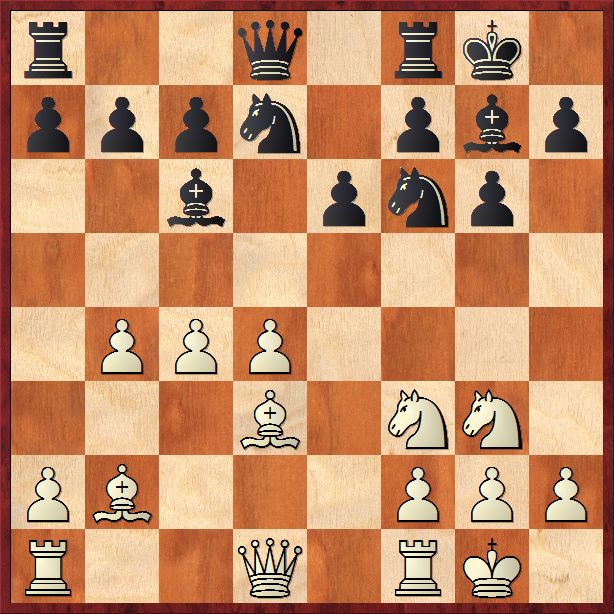
The pendulum maneuver of the bishop allowed White to win back a tempo that Black has managed to save for himself previously and use this fact to grab more space on the queenside. However, not so convincing is 13.Qe2 b6! 14.Rad1 Qc8 15.Ne5 Bb7 16.f4 Re8, as in Navara-Jakubiec, 2014.
13...Bxf3 14.Qxf3 c6
Right now it has become quite clear that the knight on g3 is not so badly placed. It contributes to the potential h4-h5 advance, and, in general, the side having the bishop pair profits from the presence of an extra pair of knights as the opponent is unlikely to find outposts for both his knights at the same time.
15.a4 a6
This is a key moment. Of course, from the theoretical point of view the black pawn chain is to be arrayed on the light squares. The modest advance of the rook pawn, however, allows Popov to clamp the queenside, condemning the opponent for a long tedious defense. The real siege begins that soon blooms into a full-fledged assault of Königsberg!
15...a5!? 16.b5 Qc7 17.Rfd1 Rfd8 and although this allowed White to get hooked up to the c6-pawn, it still left Black with the hope of securing c5 as an outpost for his knight and with the game against the d4-pawn.
16.Rfe1 Qc7 17.a5 Rac8
The freeing idea 17...Rfe8 18.Bc2! (18.Re2?! allows 18...Qd6! 19.Bc3 e5)18...e5 does not equalize in view of 19.dxe5 Nxe5 20.Qf4 Nfd7 21.Bc3 c5 22.b5, therefore the governor of the fortress reorganizes his forces under the shelter of its turrets.
18.Re2
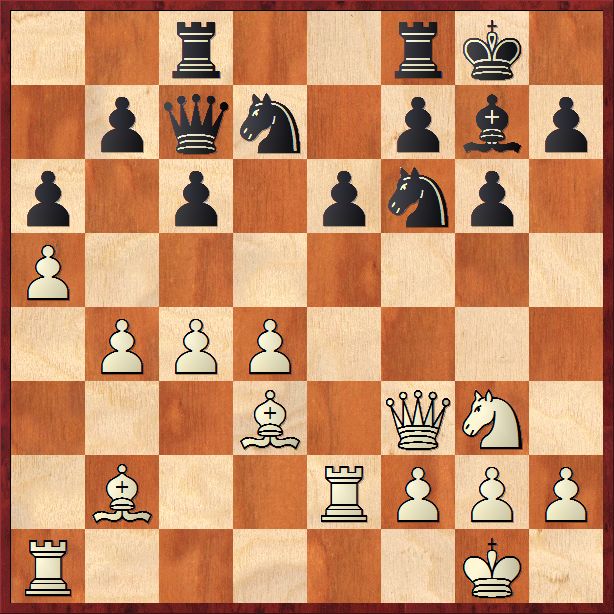
18...Bh6?!
A turning point! Why has Black refrained from the “anti- Molner" approach 18...Ne8 19.Rae1 Nd6?
Rakhmanov heads for the exchange of queens, but without the heavy pieces on the board the White's king is enabled to occupy the center, whereas his dark counterpart is deprived of such a privilege.
19.Nf1 Qf4
A move later the f4-square might become inaccessible: 19...Rfd8 20.g3.
20.Qxf4 Bxf4 21.Nd2 Rfd8 22.Nb3
Without the queens on the board the threat of undermining the center via e6-e5 has markedly lessened in force, and Ivan has immediately gone about bringing his knight to b3, thus cementing his opening achievements.
22...Bh6 23.Rd1 Ne8 24.g3 Bf8 25.Bc3
There's no hurry as 25.Nc5 Rc7 26.Red2 Nxc5 27.bxc5 Rcd7 is not successful at all.
25...Bg7 26.g4
The pawn takes away the ideal square from the black knight (when it comes to the maneuver Ne8-d6). White opens a second front on the kingside, capitalizing on his space advantage.
26...Bh6 27.Kg2 Nc7

28.Bd2
Who is going to profit from the exchange of bishops is a subject of debate. In theory, all simplifications play into the hands of the defending side. However, White is not going to do without the f4-f5 advance, attacking the base of the pawn chain. Of course, one can as well start with 28.Kg3!?, but Popov has made up his mind to act in a more simple manner.
28...Bxd2 29.Rexd2 Rb8 30.Be2 Nf6
I recall the comments of Bronstein to the games of Stahlberg in his famous book "International Tournament of Grandmasters", where David Ionovich explained in detail why the Swedish grandmaster needed to stick to the strategy of the passive defense as any active operations were likely to lead to new weaknesses in the pawn structure!
Also here in the case of 30...g5 31.f4 gxf4 32.Kf3 e5 (or 32...b6 33.axb6 Rxb6 34.Na5) 33.dxe5 Nxe5+ 34.Kxf4 Re8 35.Nc5 Ne6+ 36.Nxe6 Ng6+ 37.Kf3 Rxe6 38.Rd8+ White is going to find his way to the opponent’s queenside pawns sooner or later.
31.f4 Ne4 32.Rc2 Kg7 33.Bf3 Nd6 34.Rd3 h6 35.Kf2 Nc8
Rakhmanov is patiently waiting for the opponent’s attack to begin, just as the Night Watch in the Game of Thrones was waiting for the advent of the white walkers. Again, 35...f5 36.Nc5 or 35 ...g5 36.Kg3 does not afford too much happiness.
36.Ke3 Ne7 37.Nc5
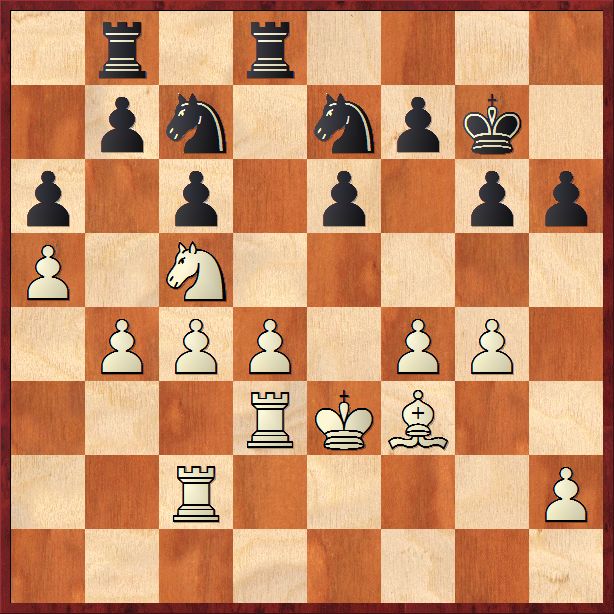
37...Kf6?
It appears that this king maneuver is already a crucial error. The white king is at the cross-roads, being defended by his faithful servants, but Sasha had the opportunity right here to start his counterplay by 37...g5! with the idea of 38...Ng6, emphasizing the shortcomings of His Majesty's position on the e3-square, and joining the fight for control over the f4-square.
38.Rf2 Kg7 39.Kd2 Ne8
Alas, the precious time is lost and 39...g5 is now met by the elegant 40.fxg5 hxg5 41.Be4! Ng6 42.Kc3 Nf4 43.Rdf3 Rh8 44.Nd3 winning.
40.Kc3
The king has arrived at c3; once the time control and the preliminary artillery preparation are over the infantry lunges forward as in a bayonet attack.
40...Nd6 41.Re2 Kf8 42.Rde3 Ne8 43.Re5 Nf6 44.f5! gxf5 45.gxf5 Nxf5 46.d5! cxd5 47.cxd5

White wins the pawn back, whereas the poor creatures on b7 and a6 are not to be envied...An attempt to get away with it tactically is doomed to failure: 47...Nd7 48.dxe6! Nxe5 49.Rxe5 Ne7 50.Nd7+ Kg7 51.Nxb8 Rxb8 52.exf7 Kxf7 53.b5 and the "retention stud" on a5 is going to queen in the near future. The more stubborn continuation, played in the game, failed to bail out either.
47...Ng7 48.dxe6 Nxe6 49.Rxe6 fxe6 50.Nxe6+ Ke7 51.Nxd8+ Kxd8 52.Re6 Ng8 53.h4 Kc7 54.Rg6
Both black weaknesses are indefensible, and Vanya’s excellent performance has reaped him a harvest of pawns.
54...Ne7 55.Rxh6 Rf8 56.Be4 Rf4 57.Kd3 Kd7 58.Ke3 Rf7 59.Rb6 Kd8 60.Rxb7 Black resigns.
After three rounds only Popov has left the firing line upon having killed all the targets. Meanwhile, on the second game-day it was Rakhmanov who became the hero of the round, having defeated the European champion in the sharpest of battles.
Rakhmanov – Najer
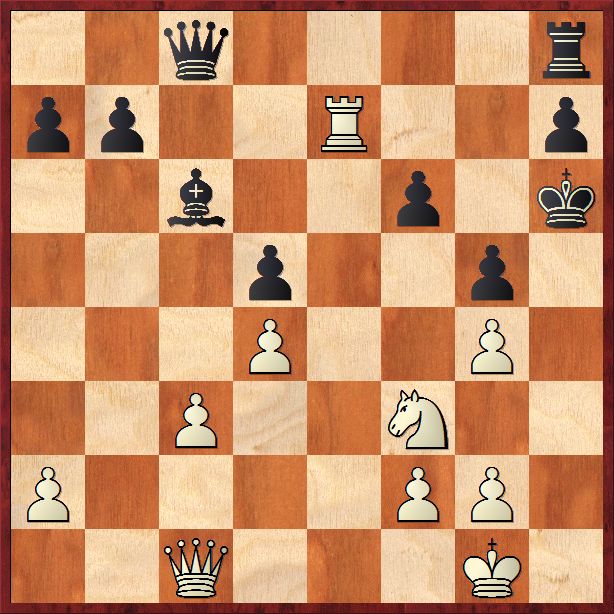
The black king is literally begging White to come up with some kind of a beautiful combination and Rakhmanov is not to be asked twice.
28.Nxg5!
The geometry of amazing beauty is revealed by the computer: 28.Qa3! Rd8 (bad is 28...Qxg4 29.Qd6 Qf4 30.Qe6 with infiltration of the white queen into f7) 29.c4!! Qxg4 (29...dxc4 30.Ne5) 30.Qd3 Rh8 31.c5 (zugzwang!) 31...Bd7 32.Nh2! Qf5 33.Qf1!! g4 (or 33...Re8 34.g4) 34.f3 g3 35.Ng4+ Kg6 36.Qe1 winning. However, to perform the beauty of this magnitude over the board you need to be no less a person than Borislav Ivanov.
28...fxg5 29.Qe3?
This is a barely visible mistake that could have allowed Black to bail out! An effective end to the game could have been put by a subtle 29.Qe1! Qxg4 30.Re6+ Kg7 (this time there is no 30...Kh5 in view of 31.f3) 31.Qe5+ Kg8, when all the preceding maneuvering is crowned by a quiet move 32.g3! with irrefutable threats.
29...Qxg4 30.f3
As nothing is to be gained by 30.Re6+ Kh5! Alexandr starts commissioning his pawns into the king chase.
30...Qf5 31.g4 Qb1+ 32.Kg2
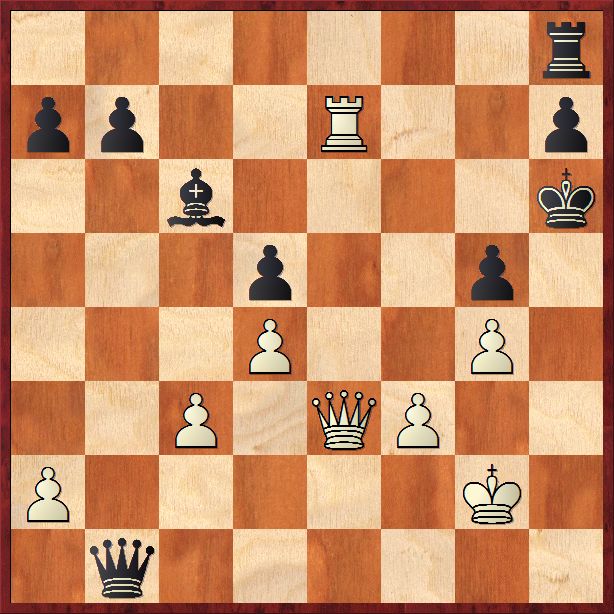
As was pointed out by Sergei Shipov, Black could have saved himself now by 32...Re8! 33.Rxe8 Bxe8 34.Qxe8 Qc2+ 35.Kg3 Qc1 with the threat of perpetual check, but Evgeniy must have believed that the attack had been thwarted, failing to recognize a devilish trap.
32...Rf8? 33.Qe6+ Qg6 34.Qe5!! Qc2+ 35.Kg3
What a tragedy! In response to 35...Rg8 White immediately decides the fate of the game in his favor by playing 36.Qe1!! Najer had therefore to part ways with his rook, reluctantly, of course.
35...Rxf3+ 36.Kxf3 Qxc3+ 37.Qe3 Qxe3+ 38.Kxe3 Kg6 39.Re6+ Kf7 40.Rd6 Kg7
The following part of the game is of a very instructive nature. By resorting to numerous zugzwang ideas Rakhmanov forces weakening of the black pawn chain, followed by the king invasion with decisive material gains.
41.a3 Kf7 42.Kd2 Kg7 43.Kc3 a5
As the winning plan is quite simple after 43...Kf7 44.Kb4 Kg7 45.a4 a6 46.a5 Kf7 47.Kc5 Kg7 48.Re6 Kf7 49.Kd6 Kg7 50.Re7+ Kg6 51.Ke5, Evgeniy engineers a provisional obstruction in the way of the white king.
44.Kd2 Kf7 45.Ke3 Kg7 46.Kf2 Kf7 47.Kg3
It is essential that the g4-pawn be defended so that it does not fall an occasional victim to the black bishop.
47...Kg7 48.Rd8 Kf7 49.Ra8 a4 50.Rh8 Kg7 51.Rd8 Kf7 52.Rd6 Kg7 53.Kf2 Kf7 54.Ke3 Kg7 55.Kd2 h6 56.Kc3

Once the white king shows up on e5, Black can as well stop the clock, therefore the poor c6-bishop can no longer remain dormant.
56...Bb5 57.Rxd5 Be2 58.Rd7+ Kf6 59.Rh7 Kg6 60.Rxb7 Bxg4 61.d5 Kf6 62.Kd4 h5 63.Rh7 Kg6 64.Re7
Now the black king is cut off from the passed pawn, whereas his luckier counterpart dispatches himself to detaining the fugitive pawns “g” and “h”.
64...h4 65.Ke3 Kf6 66.d6 Bf5 67.Kf3 g4+ 68.Kf4 g3 69.Kf3 Bg6
A worthy final to finish off the game would have been 69...Bd3 70.Re5!, but the reality turned out to be more prosaic.
70.Kg4 g2 71.Re1 Be8 72.Kxh4 Bb5 73.Kg3, and Black stopped the clock.
After round three trailing half a point behind the leader was an impressive group of pursuers. Let's leave behind the scenes the spectacular achievements of Daniil Dubov and Mikhail Kobalia against Ivan Rozum and Vladimir Fedoseev as these games have been examined in great detail by my colleagues. In round three the senior coach of the Russian junior team had to display an incredible tight-rope walking.
Frolyanov – Kobalia
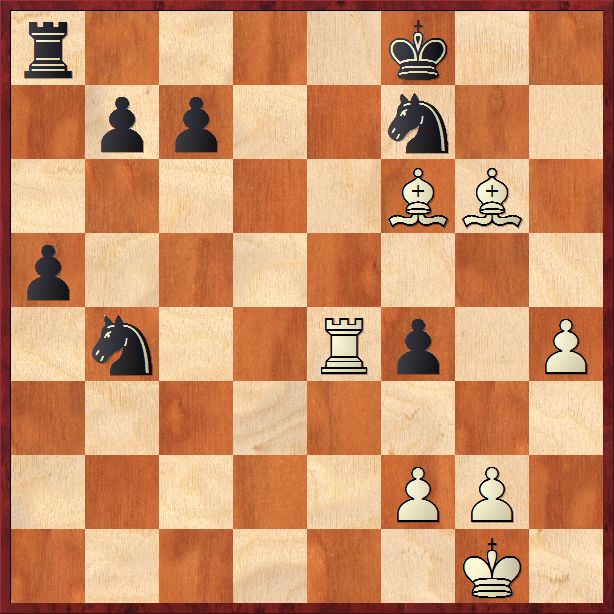
"An elephant is stronger than a horse, and those who do not believe it should go to the zoo!" as the wisecracker Eduard Gufeld likes to put it. And what if a pair of elephants faces a pair of horses on a half-empty board? Nevertheless, thanks to the dangerous outside passed pawn Kobalia managed to miraculously keep the balance.
32.Re7
In the case of 32.Be7+ Kg7 33.Bxf7 Kxf7 34.Bxb4 axb4 35.Rxf4+ Ke6 36.Rxb4 Rb8! the Black rook is placed behind the pawns and, therefore, his pawns are going to receive a lot of impetus.
32...Nh8! 33.Be4 Ra6!
Two flank moves tear down the sticky web that was wrapped around the black ruler. One of the bishops has to be traded.
34.Bg5 Nf7 35.Rxc7 Nxg5 36.hxg5 a4 37.Bh7 Nd5 38.Rxb7 a3
Here Dima has for some reason refrained from making a draw immediately and from a position of strength: 39.g6 Ne7 40.g7+ Kxg7 41.Rxe7+ Kh6 42.Bg8 a2, but after
39.Rb8+?! Kg7 40.Rb7+ Kh8 41.Bb1 Nc3
Or 41...a2 42.Bxa2 Rxa2 43.Rd7 Nc3 44.Rd3 succeeding in having the last of the Black’s pawns exchanged.
42.Rb3 Nxb1 43.Rxb1 Kg7 44.f3 Kg6 45.g3 Kxg5 46.gxf4+ Kxf4 47.Kf2 the game ended in a draw.
A lot more fatal accident occurred at the end of the game between Jaroslav Prizant and Popov’s prior rival from the round four Vladislav Artemiev.
Prizant – Artemiev

In his video review Sergey Shipov has explained us in great detail about a good combination carried out by Yaroslav in the middle of the game, and noted the superb endgame technique demonstrated by Vlad that allowed him to not only to survive, but also to go on winning the game. Now White should have attempted at least to avoid the mutual mass annihilation of pawns by 27.Re3. It seems incredible that the passive black pieces are able to take up the gauntlet thrown by the white forces and respond with the equal amount of terror, but the knight in the hands of Artemiev is more than just a knight!
27.Rd5 Rad8 28.Rb7
It was not yet too late to think again – 28.Rb5 Rxd5 29.Bxd5.
28...Rxd5 29.Bxd5 Rd8! 30.Bxf7 Nxe5 31.Rxa7 Rf8! 32.Bd5 Rxf2+ 33.Kc3 Rxh2
The only survived White’s infantryman is on a2, and it is still very far from the promotion square.
34.Rc7 Rh3+ 35.Kc2 Nd3 36.Be4 Nb4+ 37.Kb2 Rh4
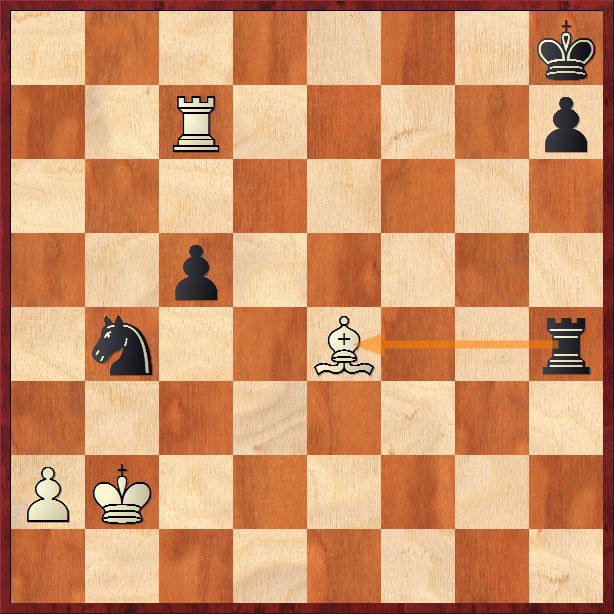
As there is almost no material left on the board it's very hard to guess which move could lose for White, other than blundering a bishop or a rook. However, Jaroslav comes up with a forced line, too much for his own good...
38.Bxh7 Rxh7 39.Rxh7+??
White could have still bailed out via 39.Rc8+! Kg7 40.Kb3, when the drawn “position of Stanislav Bogdanovich" appears on the board as the c5-pawn cannot be kept alive.
39...Kxh7 40.Kc3 Kg6 41.Kc4 Na6 42.a4 Kf6 43.Kb5 Ke6 44.a5 Kd7!
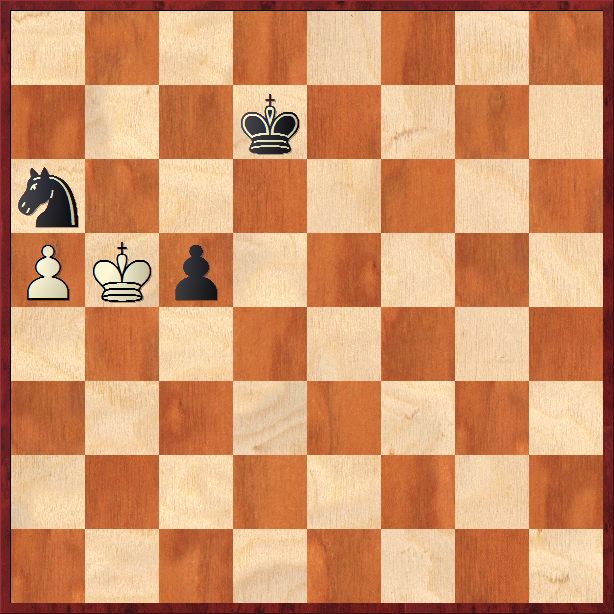
Both pawns promote simultaneously, but Artemiev’s king helps set up the mating net. Prizant resigned without waiting for 45.Kxa6 c4 46.Kb7 (46.Kb6 Kc8 47.a6 Kb8) 46...c3 47.a6 c2 48.a7 c1Q 49.a8Q Qb2+ 50.Ka6 Qa3+ 51.Kb7 Qb4+ 52.Ka6 Qa4+ 53.Kb7 Qb5+ 54.Ka7 Kc7 and Black is winning. There is no escaping for Yar Sanych from getting into the next edition of Mark Dvoretsky’s “Endgame Tragicomedies”...
Vlad was on a roll and went on to deal a severe blow to Pavel Ponkratov, whom he was defeated by in Izhevsk last year.
Ponkratov – Artemiev
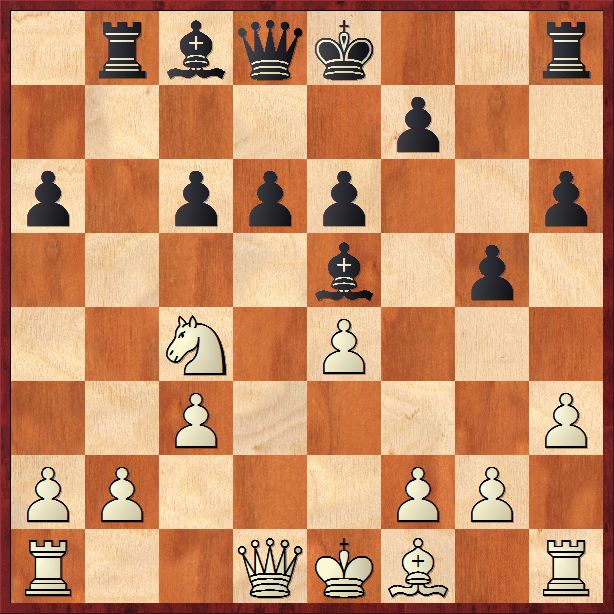
In one of the broadcasts a registered user came up with the assumption that the Russian rapid champion had not have enough sleep while combating with Morpheus as in the position over the board Artemiev had somehow managed to insert a couple of extra moves! Now it’s Black on move and a tactical blow by the youngest grandmaster of the SFD (the Siberian Federal District) left no chances to the youngest grandmaster of the UFD (the Urals Federal District).
16...Rxb2! 17.Nxe5 Qf6! 18.Be2 Qxe5, and Black gained the upper hand.
One of the most interesting opening duels took place in the game between Khairullin and Gabrielian.
Khairullin – Gabrielian
1.Nf3 c5 2.c4 Nc6 3.d4 cxd4 4.Nxd4 Nf6 5.Nc3 e6 6.g3 Qb6 7.Ndb5 Ne5 8.Bf4 Nfg4
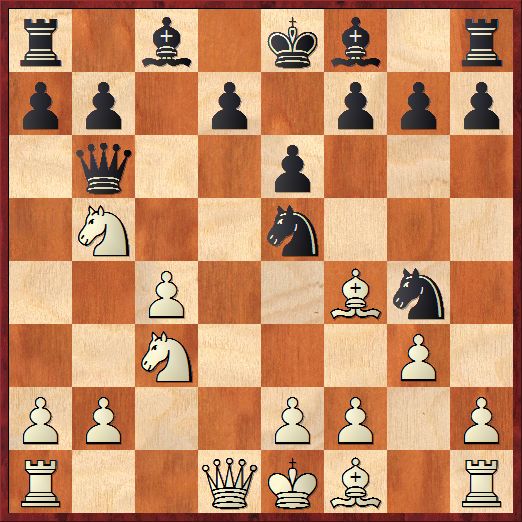
This is the same line where Sergey Karjakin had forgotten his home preparation in his duel with Nakamura. Nowadays 9.Qa4 g5! 10.Bxe5 Qxf2+ 11.Kd1 Nxe5 12.Nc7+ Kd8 13.Nxa8 Qd4+ 14.Kc2 Nxc4 15.e4 Qd2+ (Sergei lost after 15...Ne3+? 16.Kb3 Qd2 17.a3) 16.Kb3 Qxb2+ 17.Kxc4 Bg7 (inaccurate is 17...d5+ 18.Kd3 Bg7 19.Ne2 Qxa1 20.Bg2, and White managed to consolidate the position while remaining up material) 18.Qa5+ b6 19.Qxg5+ f6 20.Qb5 Ba6 21.Qxa6 f5 22.Qxa7 Qxc3+ 23.Kb5 Qc6+ is exhausted as far ahead as the draw by perpetual check (as in Shankland-Leko, 2014).
Ildar takes another way.
9.e3 a6
9...Qc6 10.h3! Nf3+ 11.Ke2 Nge5 12.b3 g5 13.Bg2 gxf4 14.exf4 is losing as in Korchnoi-Greenfeld, 1995.
10.Qa4 Rb8
Exactly this line was recommended on the website of the Russian Chess Federation in a wrap-up review of the Zurich-2015 tournament.
After 10...g5 11.Bxe5 Nxe5 12.0–0–0 Be7 13.Be2 0–0 14.Nd4 d6 (the Dominguez’s recipe fails to bring equality either: 14...Qb4 15.Qxb4 Bxb4 16.f4 gxf4 17.gxf4 Ng6 18.h4) 15.f4 Timman ripped Duda’s position to pieces, whereas the line from the blitz game Matlakov-Grischuk 10...Ra7 11.h3 g5 12.hxg4 gxf4 13.gxf4 axb5 14.Qxb5 Qxb5 15.Nxb5 Nc6 16.Nxa7 Nxa7 is also in White’s favour as the rook and pawns are superior to two minor pieces.
11.Be2 axb5 12.Nxb5 g5!
It was here that the peaceful agreement was signed between Bruzon and Gonzalez. However, our guys are combative, and the tournament rules are Sofia’s regulations! The fighting continued.
13.Bxg5 f6 14.Bf4 Rg8
It is hard to translate the computer lines into the human words. The Stockfish’s opinion is that you cannot do without 14...h5 15.h3 (15.0–0 Qc5! 16.a3 b6!) 15...Nh6, while now Khairullin could have secured his advantage by an effective 15.0–0 Qc5 (15...Kf7 16.h3 Nh6 17.c5! Qxc5 18.Rac1 Qb6 19.Na7! is a nice line) 16.h3 Nh6 17.b4.
15.h3 Nh6 16.0–0–0 Kf7 17.g4 Rg6 18.Rhg1 d6 19.Qc2 Kg8 20.h4 Nhf7 21.Nc3 Ra8 22.Kb1
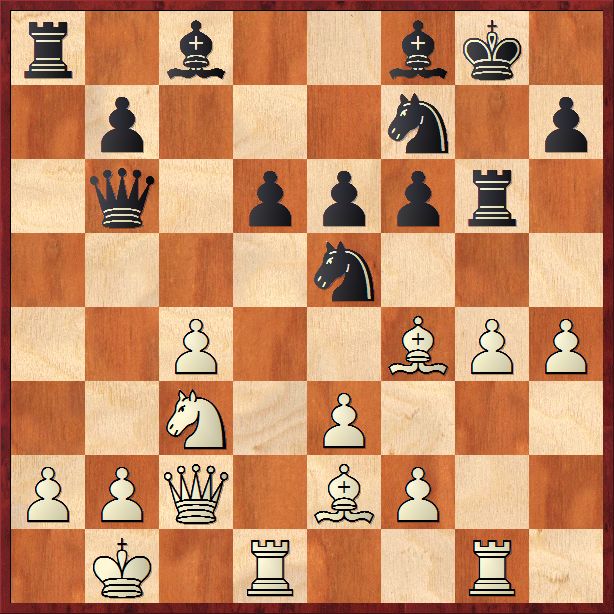
Both sides have consolidated, while Gabrielian remained with a piece for two pawns. Black still needed to demonstrate some accuracy by 22 ...Rg7 or 22 ...Be7, since 22...Qb4 23.Ne4 d5 24.cxd5 exd5 25.Nc3 Nc4 26.Ka1 b5 27.h5 Rg7 28.Nxd5 resulted in his immediate collapse. Ildar goes on fighting for the qualification into the Super Final and we wish him good luck. However, it hurts for Arthur and the line itself.
The women's section of the tournament has seen no shortage of surprises either. 12-year-old Alexandra Maltsevskaya began the tournament on a superb note, winning the first round game in a tactical manner. However, the next round but one saw Sasha winning an excellent positional game.
Maltsevskaya – Balaian
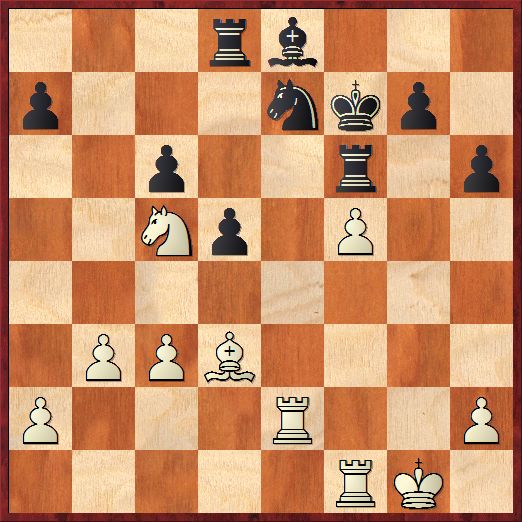
27.Re5 Bd7 28.Rfe1 Ng8 29.c4 Bc8 30.b4! Rfd6 31.Ne6! Rxe6
In the line 31...Bxe6 32.fxe6+ Ke7 33.c5! Black would have to say farewell to his rook anyway. Therefore Alina was forced to part ways with the exchange sacrifice.
32.fxe6+ Ke7 33.cxd5 Rxd5 34.Rxd5 cxd5 35.Rc1, and White gained the upper hand.
A somewhat tragic duel Pustovoitova-Savina was left remaining hidden from view in the background.
Pustovoitova – Savina
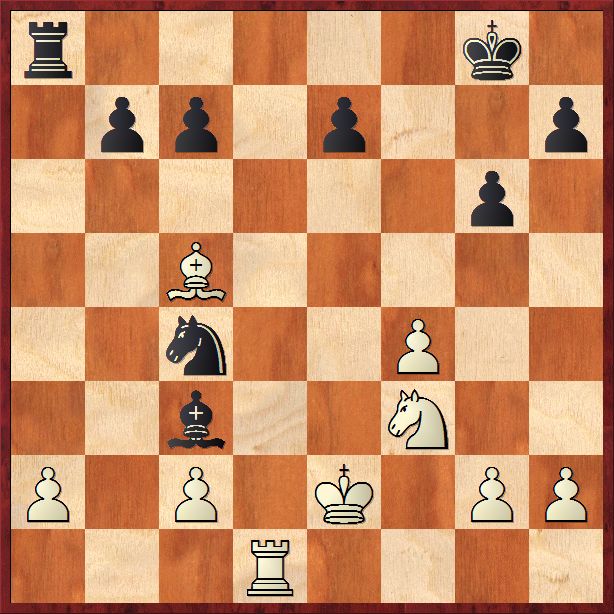
Although Anastasia Savina features a high rating over 2400 and is close to the top ten female players of our country, she has so far failed to reach the Superfinal as yet. Before the start of the tournament I had the occasion to hear the opinion of an eminent expert, who recalled the phrase by Sergei Rublevsky about the minimum number of players that the women's team had in its reserves until that particular moment and added: "I think that except all the above-mentioned, it is Savina who can still try to prove that this reserve is not that restricted". And now there comes such a stroke of misfortune after two previous victories.
22...b6?
This is a blunder. The simple move 22 ...Nd6 was correct, and in order to reach equality White had yet to uncork 23.Rb1! b6 24.Rb3! with the idea to place the rook on a3.
23.Bxe7 Re8
The well-knit white pieces were well-prepared to set up a mating net after 23...Rxa2 24.Rd8 + Kf7 25.Rd7, but in the game it all worked out quite poorly for Black.
24.Rd8 Kf7
24...Nd6 25.Ne5 does not bring any relief either.
25.Rxe8 Kxe8 26.Kd3 Bg7 27.Kxc4 Kxe7 28.Kd5 Kf6 29.Kc6 winning.
Alina Kashlinskaya was off to an excellent start of the tournament. Prior to publishing the article your author familiarized himself with Eteri’s review entitled «Do not Challenge Alina with the Benoni..."
And where is one supposed to seek shelter from an arsenal of novelties produced by Radoslaw Wojtaszek? Only the rounds to come are going to produce answers to these tricky questions.













